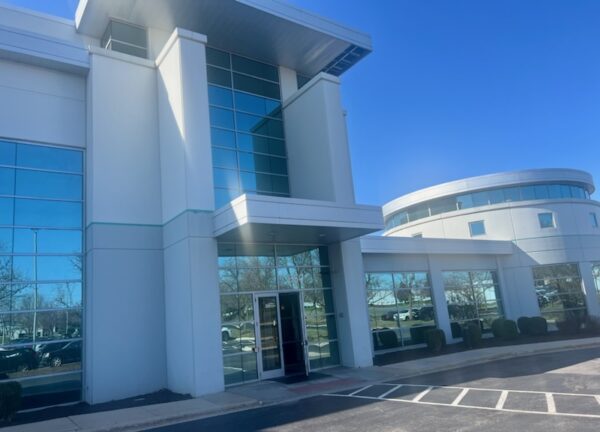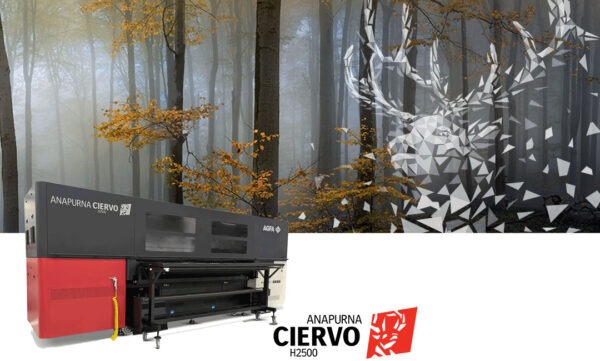Options abound for dealers courageous enough to enter this expanding market.
Industrial print is one of those terms that defies clear definition. What exactly is it? Like the sometimes mile-wide, mighty Mississippi River, the broad category represents many things in a vast ocean of different businesses. Basically, “industrial print refers to ink or toner that’s imprinted on products as part of a manufacturing process,” explained Brian Balow, VP of U.S. channel sales and services for Ricoh USA.
The common denominator may be that most of these industrial/commercial-grade products need to perform seven to 15 years within manufacturing environments. For example, the RICOH Pro Z75 model, introduced in early 2024, is a durable, B2 format cut-sheet inkjet press capable of producing light packaging and commercial applications on demand at faster speeds and lower costs, according to Balow. “We expect these machines to be operational for at least 10 years,” he said. “The new series can apply aqueous pigment, water-based inks on much heavier substrates.” Indeed, the Pro Z75 supports media from 60 grams per square meter (gsm) to 400 gsm.
Print engines in the RICOH Pro C9500 digital electro-photographic, toner-based presses are versatile enough to handle a wide media range for light packaging applications on textured and coated media. Balow also referenced the RICOH Pro C7500 5th station digital press, the third generation of the company’s successful CMYK+ embellishment line. New innovations include the integration of both the new GBC punch unit and Plockmatic CTXL. Ricoh remains the only manufacturer offering modular and scalable single-pass embellishment in its class. Both devices are featured at this month’s PRINTING United Expo (see sidebar), with applications designed to engage print service providers as well as in-plants.
The graphic arts wide format space is another industrial print area where Ricoh’s equipment portfolio excels, noted Balow. Devices such as the RICOH Pro TF6251 Wide Format UV LED flatbed printer can imprint on rigid plastic, metal, brick, and cement from ¼-inch up to more than 4 inches thick. “Using these as well as the EFI 30h hybrid printers powered by Ricoh inkjet heads, we believe our partners can capitalize on product adjacencies and truly offer dealers one source for industrial print solutions,” added Balow.
Sign shop manufacturers and larger hospital networks that operate internal print shops to produce signage represent obvious vertical markets for this product. Balow urges dealers to consider the natural growth path that toner, UV, and inkjet solutions provide.
Konica Minolta Business Solutions U.S.A. also breaks industrial print into specialized areas, according to John Fulena, VP of production and industrial printing. “We’ve identified three key segments where dealers can make money: wide format or so-called hybrid printing, labels and packaging, and print embellishment/enhancement.”
The $16 Billion Industrial Print Pie
As the manufacturing sector continues its digitization process, the present represents an exciting time amid history’s fourth industrial revolution. Also known as 4IR or Industry 4.0, intelligent machine operation automation is the focus of this next phase, according to Future Market Insights (FMI) and other observers. The net value of total industrial printers adopted worldwide is likely to reach nearly $16 billion by the end of 2024, reports FMI, and global demand is poised to grow at a rate of 5.5% over the next 10 years.
FMI predicts that overall market value will exceed $26 billion by 2034. Most of that growth is expected to be driven by more applications in the printed electronics and radio-frequency identification sub-sectors. One player, Zebra Technologies, manufactures compact, RFID barcode and label printers that sell for $900 to $3,800 and feature encoding as small as three inches. They also can operate in rugged outdoor conditions.
The big question, of course, is how dealers can make money in the industrial print sector. Before venturing down this path, Balow believes that dealers must first be solid in the core production print market with an emphasis on the higher volume segment. “Once that foundation has been established, industrial printing is a natural next step,” he said. However, he cautions that success requires a sales strategy and service infrastructure. “Once your front and back office is strong, then you can begin cross-selling and upselling efforts for industrial printers,” he said. In addition to the manufacturing sector, other vertical market opportunities include healthcare organizations, commercial printers, and promotional incentive/awards companies.
Adding wider format equipment options might be a reasonable entry point for owners of dealerships to get started in industrial printing. The prices are right, and a local service gap exists that dealers can capitalize on. According to Balow, because these wide format devices start in the $30,000 to $40,000 price range and go up to about $250,000, dealers can resell them and provide service. The most important thing, he added, is to have a business partner with a dedicated dealer industrial print infrastructure to coach and enable pre- and post-sales implementation.
Wide format and label reproduction share many similarities with several traditional copier and MFP product equipment lines, explained Konica Minolta’s Fulena. “The workflows basically are the same…and the label printers use the same print engine as our AccurioPress C14000 Digital Press, so there’s a familiarity there for dealer organizations. For wide format print production, the front-end software used to process files also makes for a relatively painless transition,” added Fulena.
Nonetheless, there is a learning curve. Much like dealers who want to get into production print, Fulena emphasized that they must gain an understanding of the wide format print and label businesses. OEMs such as Konica Minolta can assist with this quest. For example, Konica Minolta has subject matter experts (SMEs) who frequently lead technical consultations. “We can help to price and sell [the devices] and handle service, too,” said Fulena.
Depending on the machinery, some dealer owners opt for a hybrid program where they make the sale and then receive a finder’s fee on service and maintenance. Such lead-feed arrangements are common in the embellishment space. “Servicing post press finishing devices is out of the comfort zone of most dealerships,” observed Fulena. “There’s just not enough critical mass in the field.”
The lure is that finishing enhancements and special effects can add value to the printed medium, which is why Konica Minolta forged a strategic alliance with MGI Digital Technology—and now maintains a more than 42% ownership stake in the manufacturer. For those end customers looking to differentiate their printing by creating rich, sensory experiences, embellishment is a bit of a different animal,” said Fulena.
Quick Labels and Special FX
The COVID-19 pandemic altered consumer buying habits, which had a positive impact on the labeling market. “The change in purchasing behaviors, combined with the ability to run lower quantities digitally, have been big attractions for print service providers [PSPs],” noted Fulena. The global printed label market is estimated at more than $51 billion in 2024, reports Mordor Intelligence, and is expected to exceed $62 billion by 2029 with a CAGR (compound annual growth rate) of +4%.
For the dealer channel, vertical-market label opportunities are diverse, from dressing up craft beer bottles to customized, sequential numbering. Konica Minolta’s AccurioLabel 230 Digital Label Press is ideally suited for such jobs. Now in its third generation, these dry toner machines offer speed improvement on tack papers and tack films at a maximum of 76 feet per minute. With a price point of approximately $195,000, this technology is far more palatable than the million-dollar label production investments required in the past.
Twelve months ago, Konica Minolta introduced its AccurioLabel 400 model, which features a heavier duty cycle, is even faster than the AccurioLabel 230, and can print white ink inline on clear substrates. Showing this month at Labelexpo Americas 2024 (see sidebar) is the AccurioShine 3600 + iFoil One, which is part of a revamped embellishment line.
Epson’s newest on-demand color inkjet label printer became available in late July through the OEM’s authorized partners. According to Epson, the 4-inch ColorWorks CW-C8000, built for mid- to high-volume batch runs, is engineered for excellent print quality, reliable performance, and high-speed printing with advanced connectivity and cloud printing. The CW-C8000 is designed to meet high-volume label production needs in several markets, including prime and boutique, product ID, and warehousing and logistics. It can print multiple labels with variable data at speeds up to 12 inches per second. Epson says the PrecisionCore permanent printhead allows for fewer interventions and low maintenance costs.
It’s Showtime!
Konica Minolta partner IIJ Industrial Inkjet Ltd. was present this past spring at drupa, the international printing industry’s quadrennial event. IIJ creates custom machinery for inkjet printing on a range of media. Basically, if a customer provides an encoder and product-detect signal, they can print on it. The company also offers security features and has successfully completed such challenging projects as robotic arm printing and continuous 24/7 output. Through an independent partnership, IIJ is the sales and technical support center for Konica Minolta Inkjet outside of Asia.
Also at drupa, Toshiba launched two on-demand, piezo inkjet printheads designed for industrial applications requiring high print quality. The CF6/R is an evolution of the existing CF3/R, and the CX1 is a new head designed to compete with the RICOH Gen5 and Konica Minolta 1024i in the mid- to high-volume large-format market. Meanwhile, the TABS Duplex Linerless Thermal Printer, rolled out in early 2023, simultaneously prints a shipping label and packing list onto one dual-sided label sans liner.
For the first time, Kyocera exhibited at drupa, demonstrating the potential of its inkjet solution in the niche market of photo printing. Developed with print engines from NIXKA, the France-based producer of inkjet print engines and systems that Kyocera acquired in early 2023, the device features 1200×1200 dpi resolution. The company foresees new industrial print synergies down the road, including customized applications on non-processed substrates, such as folding cartons and flexible film packaging.
This month, equipment manufacturers from around the globe are exhibiting en masse at two printing expositions taking place in the United States. More than 800 exhibitors are unveiling their latest solutions at the PRINTING United Expo in Las Vegas (Sept. 10-12). Another 450 exhibitors (many of the same companies) are displaying a full range of machinery and materials for the label and package printing industry at Labelexpo Americas in Rosemont, Illinois (also Sept. 10-12). Six industrial print equipment developments of note in Chicago and Vegas:
- Pre-show in August, Epson America added two wide format dye-sublimation printers to its SureColor F-Series. On display at PRINTING United, the new 64-inch SureColor F9570 and SureColor F9570H deliver a new space-saving design for improved usability and easier installation, an expanded ink set, and the ability to produce high-quality images on textiles and hard goods, such as promotional products and photo panels. Replacing the SureColor F9470 and F9470H, the new models are built for around-the-clock productivity, allowing print shops to consistently deliver high-quality, sellable goods. They offer advanced dye-sub transfer printing for sports apparel and fashion, home décor, promotional and personalized products, and soft signage markets.
- At Labelexpo, Konica Minolta is showing the AccurioShine 3600 + iFoil One, a high-end, digital device that enables in-house spot UV varnishing—from prototyping to full production—without the need for screens, plates, or dies. While exhibiting in the Chicago area, the OEM also is previewing the MGI JETvarnish 3D Web, a roll-to-roll printer that brings special effects, such as inline 2D and 3D spot UV coating, embossed hot-foiling, die cutting, and slitting to label printers and flexible packaging producers. The attention-capturing technology makes it easy to highlight defined areas and add tactile effects to digital, flexo, and offset jobs.
- Back in Vegas, Xeikon’s revolutionary TX500 (TITON) Press, developed in collaboration with Kurz Digital Embellishment Solutions, is making its North American debut. This combination of solutions represents the latest innovation in digital printing embellishment technology, offering a single-pass, inline, food-safe, and sustainable process for “digital metal.”
- At PRINTING United, Konica Minolta is showing a new version of its AccurioPress C14000, a CMYK cut-sheet toner press. The updated design features additional inline production flexibility beyond the finishing options offered on past models.




